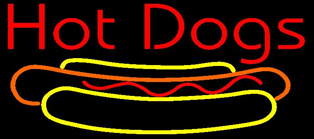 During a recent conversation with one of our partners, I wanted to illustrate a point about pricing. So I asked a simple question: “are you a hot dog stand or a hotel?” You can imagine that they had no idea what I was talking about. Allow me to explain.
During a recent conversation with one of our partners, I wanted to illustrate a point about pricing. So I asked a simple question: “are you a hot dog stand or a hotel?” You can imagine that they had no idea what I was talking about. Allow me to explain.
When it comes to pricing, there are two basic models:
1) A hot dog stand: You sell hot dogs at a set price. People line up to buy your hot dogs, and the first person pays the same amount as the last person on the line. When you want to make a pricing change, you make the pricing change for all customers. To drive your top line revenue higher, you must sell more hot dogs (or additional products, like soda and chips).
2) A hotel: Pricing is determined based on demand. On July 4th weekend, prices are very high. During the winter, prices can fall substantially. A guest staying in one room might pay a totally different price that the guest staying in the next room. You employ financial wizards to help you determine the best price to offer based on demand. You can manipulate your top-line revenue based on how you price the rooms.
There are a number of businesses that act like hotels. The most obvious one is the airlines. They have complicated financial models that help price each seat on an airplane, and whole departments that work to maximize profitability. It’s unlikely that you paid the same amount as the person sitting next to you. We all accept this, and it’s the norm.
Imagine if hot dog stands started offering their prices like a hotel! The price of the hot dog would depend on how many people are in line that day. Someone sitting next to you eating his hot dog may have paid twice the amount that you paid. You might choose to eat dogs based on which days the line was likely to be the shortest. It seems outlandish, doesn’t it?
And yet, there are numerous examples of businesses that have been turned upside down by alternate pricing. Airlines have tried pricing all seats equally, and on-line retailers have tested pricing the same product differently based on customer behavior. Even car companies like GM (Saturn) made their mark with revolutionary, no-haggle pricing. If you think it’s impossible to change an existing pricing model, ask GroupOn or LivingSocial how demand aggregation is working for them!
I believe that there are still many business opportunities in the general area of pricing models. As you conduct commerce over the next week, observe whether the product or service you buy is priced like a hot dog stand or a hotel. Can you imagine it the opposite way? Why or why not? What would have to change in the market or industry to have customers accept the new pricing?
It might seem obvious, but make sure you know what kind of business you’re starting and think carefully about your pricing in that context. Then, imagine your product priced the other way. What can you learn about how customers think of your product or service? How can you innovate in your market with pricing?


 June 13, 2011
June 13, 2011
